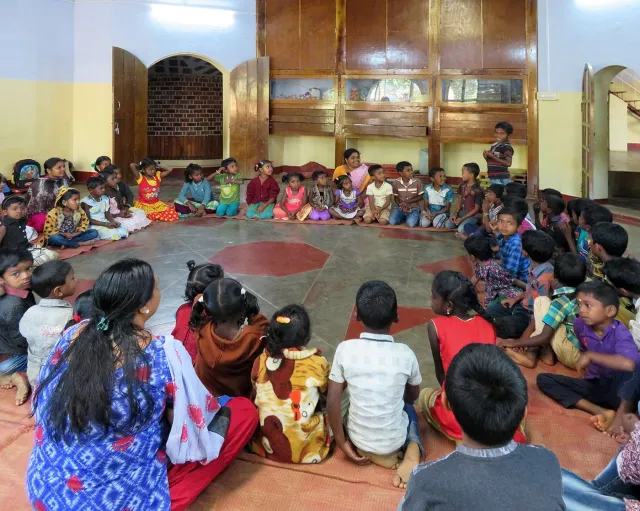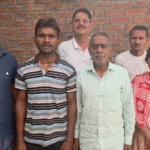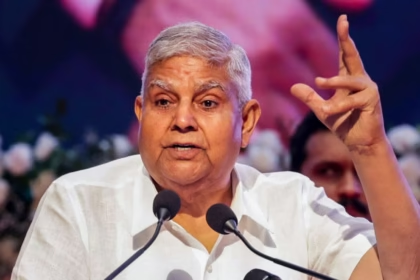Union Govt Says Math & Science Teachers Must Also Teach Hindi in Adivasi Schools
New Delhi: The National Education Society for Tribal Students (NESTS), a Union government body, has instructed the principals of all Eklavya Model Residential Schools to initiate a comprehensive campaign aimed at “fostering interest and enthusiasm in the Hindi language” among Adivasi students.
This notice, issued on August 20, emphasises that “the responsibility of teaching the language does not solely rest with the language teacher, but also extends to other educators within the school”. This means mathematics, science and social studies teachers will also be required to assume the role of Hindi teachers. This marks an unprecedented development in the realm of Indian education, as it is likely the first instance where teachers of different subjects have been tasked with the duty of teaching Hindi.
NESTS operates under the Ministry of Tribal Affairs. The circular includes various instructions that raise concerns regarding the potential undermining of the linguistic and cultural identities of Adivasi communities, and whether there is an effort to bring them under the “hegemonic” umbrella of Hindi.
When asked NESTS about whether any discussions took place with Adivasi communities, teachers or language experts prior to the notice. The response was, “This is an ongoing process. It is founded on continuous dialogue with all parties involved.”
When asked about any studies or data to indicate that students were struggling to learn Hindi, the response was, “The need for this was recognised after analysing [students’] results in Hindi.”
It remains uncertain which experts NESTS consulted or what research was undertaken.
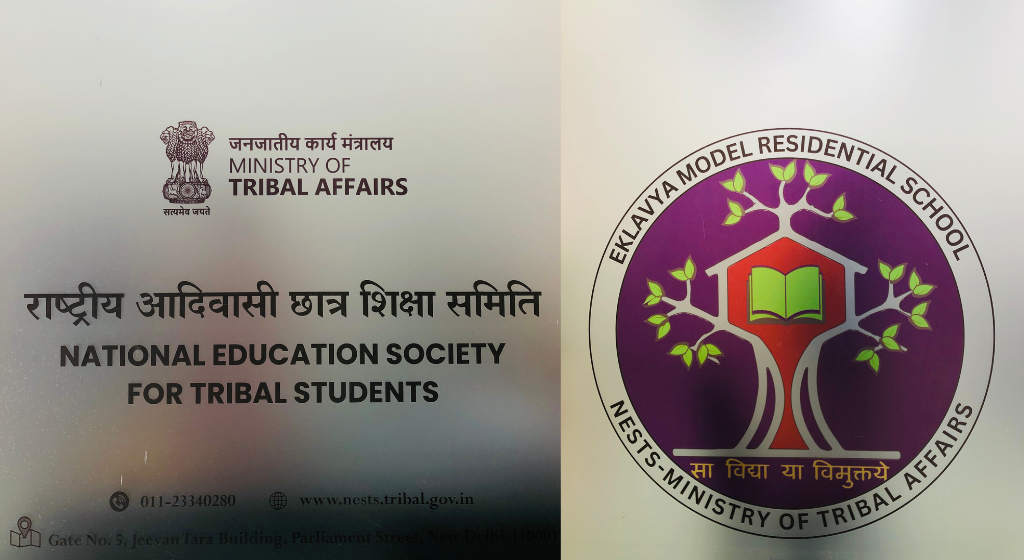
Hindi room: a symbol of cultural dominance?
Eklavya Model Residential Schools were established in 1997-98 with the aim of offering Adivasi students high-quality, inclusive education within their own communities. The fundamental objective of these institutions was to deliver contemporary education to Adivasi youth while safeguarding their cultural and linguistic heritage.
As per the Ministry of Tribal Affairs, a total of 722 schools have received approval nationwide, with 485 currently in operation.
In a statement made by Durgadas Uikey, Union minister of state for tribal affairs, in the Lok Sabha on February 6, 2025, it was noted that 722 schools had been sanctioned, of which 476 were functioning. He mentioned that Eklavya schools had been authorised in 28 out of 36 states and union territories in the country. Schools are operational in 26 states and union territories, excluding Ladakh and Meghalaya.
This also includes non-Hindi-speaking states and union territories: Dadra and Nagar Haveli and Daman and Diu (1), Assam (1), Arunachal Pradesh (5), Nagaland (3), Mizoram (11), Manipur (3), Karnataka (12) and Kerala (4).
In order to “foster an appreciation for Hindi” among Adivasi students in classes 6 to 8, this notice proposes the creation of a dedicated “Hindi language room” in each Eklavya school. This room will feature a large blackboard, and its walls will be adorned with portraits of renowned Hindi authors, images with literary significance, charts and diagrams. Additionally, the Hindi classroom will be equipped with a radio, tape recorder and television.
Furthermore, there are instructions to organise competitions in Hindi for poetry, debates, essay writing and handwriting.
Language experts expressed concern that this may discriminate against Adivasi students who are not proficient in Hindi, potentially stifling their creativity and fostering feelings of inferiority.
NESTS stated, “The primary aim is to make Hindi education effective. Wherever Hindi is taught, the implementation of modern teaching methodologies has been mandated.”
When we asked NESTS whether or not this notice would be discriminatory for students in schools where Hindi is not the primary language, the reply indicated that this notice is only applicable to schools where Hindi is part of the curriculum.
However, the reality is contrary. The notice has been sent to all schools, implying that every school is required to comply with it.
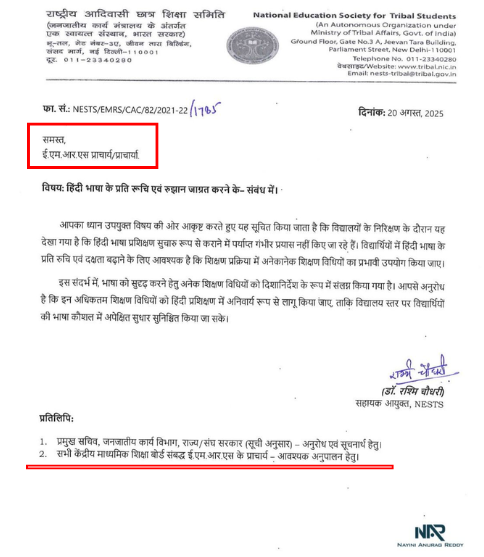
Educational injustice in place of social justice?
On the one hand, the Union government is making commitments to safeguard the culture of Adivasi communities. But on the other, their interests are being overlooked, from Ladakh to central India.
The Adivasi population in India surpasses 104 million, consisting of over 700 distinct tribes, each possessing its own unique culture and language. Among these, only two tribal languages, Bodo and Santhali, are recognised in the Eighth Schedule of the Constitution.
Research shows that around 25% of children in India experience moderate to severe educational disadvantages due to being educated in a language that is not familiar to them. Education based on the mother tongue is crucial not only for academic success but also for psychological development, particularly for Adivasi children, who are frequently labelled as “backward” in various discussions.
Making Hindi compulsory will affect teacher recruitment
This notice cannot be read in isolation. In recent years, the Union government has implemented various measures that seem to forcibly impose Hindi on Adivasi students. For example, after an announcement in the 2023 Budget, the responsibility for hiring teachers for Eklavya schools was transferred to NESTS. This action centralised the recruitment of both teaching and non-teaching staff at Eklavya schools.
Moreover, proficiency in Hindi was established as a compulsory criterion for the recruitment process. This governmental decision sparked significant controversy.
Several states and political leaders have voiced their opposition to the imposition of Hindi. DMK leader Tiruchi Siva raised a question in the Rajya Sabha regarding the neglect of the state language. He pointed out that newly appointed employees were unable to effectively communicate with students due to their lack of knowledge of the language spoken by the students.
As a result, the government was compelled to slightly relax the regulations concerning Hindi proficiency. Nevertheless, this did not eliminate the Hindi requirement, as the ministry has determined that Trained Graduate Teacher (TGT) candidates will be assessed in the preliminary written examination based on their overall performance in three languages (English, Hindi and a regional language of the candidate’s choice) within the language proficiency section. This section will account for a total of 30 marks, strictly for eligibility purposes. Candidates are required to score at least 12 marks across all three languages combined.
Under the previous regulation, TGT candidates were mandated to secure a minimum score in Hindi, irrespective of their selected regional language. Additionally, the requirement for proficiency in Hindi continues to apply to post-graduate teachers (PGTs), who generally instruct students in classes 9 to 12.

Moreover, teachers from Hindi-speaking states have been sent to southern and northeastern states, where they lack proficiency in the local language and do not comprehend Adivasi culture.
In 2024, students at Eklavya School in Telangana expressed dissatisfaction with their English teacher, who teaches lessons in Hindi. The physics teacher, facing challenges in communicating in English, also teaches in Hindi, which the students find difficult to follow. The chemistry instructor uses only Hindi and refrains from teaching in English, despite the students’ requests.
CPI(M) leader Brinda Karat wrote a letter to tribal affairs minister Jual Oram, demanding that the centralised recruitment process be cancelled. This request was not fulfilled, and recruitment for NESTS Eklavya schools has been re-opened
Mother tongue-cased education: a scientific necessity
According to linguistic and educational psychology, early education in the mother tongue is crucial for children’s cognitive development. The National Education Policy 2020 also supports the concept of mother tongue-based multilingual education. Nevertheless, in practice, Hindi imposition continues.
The Mother Tongue-Based Multilingual Education (MTB-MLE) initiative, which has been operational in Andhra Pradesh since 2003, illustrates the effectiveness of education conducted in tribal languages. Similarly, in Odisha, such programmes have enhanced the confidence of Adivasi children in schools.
Shivani, an educator affiliated with Muskaan, a non-governmental organisation dedicated to the education of marginalised children, said, “This is an attempt to push us towards a monolithic identity.” Language is intricately connected to identity, and NESTS’ efforts to enforce Hindi upon Adivasi children indicate that tribal identity is currently under threat, even within the educational sector.


